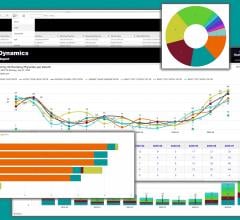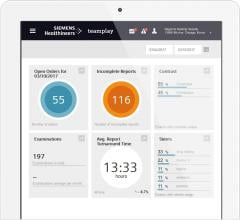The need for improved efficiency in healthcare and the new requirements of U.S. healthcare reform have rapidly made the Healthcare Information and Management Systems Society (HIMSS) annual meeting into one of the largest medical conferences in the world. More than 1,300 companies exhibited on the expo floor, covering IT for every medical specialty including cardiology, radiology and radiation oncology.
The major themes this year included how to leverage technology to implement population health initiatives, analytics software, patient engagement, improve connectivity and data/image sharing between disparate IT systems and outside physicians, and how to improve workflow efficiency.
Analytics software and population health appeared to be the poster children topics of HIMSS 2016. With all of healthcare now migrating to electronic medical record platforms, this data can be mined for business uses such as better management of inventory, procedural room use, imaging utilization, staff performance, radiation dose management, monitoring factors for patient satisfaction and to help identify bottlenecks in patient discharge, door-to-balloon times, STAT radiology reads and what contributes to poor or improved patient outcomes. This data has been available for years at many facilities, but it is the new level of analytics software integration that now makes data mining possible for all these things on one screen using one program.
Examples of analytics software and how technology can improve workflow on PACS and cardiovascular information systems can be found in the video “What to Look for in PACS Workflow Efficiency.”
However, technology is now much more sophisticated than simply pulling data on what has already happened, and can now help predict what will happen. This is the premise of the new IT arena of population health management. If all the risk factors are known for poor clinical outcomes or that lead to re-admissions, these can be tracked using software for all patients to determine who should be allocated additional, scarce resources. This is especially true for high-cost, high-readmission conditions such as heart failure, COPD and diabetes, or high-volume emergency department (ED) patient presentations, such as chest pain. Population health software starts with pulling the patient’s history, current drugs, diagnoses codes and procedures from the electronic medical record. But, it goes beyond this data to pull relevant information such as socio-economic and environmental considerations based on a patient’s address, access to healthcare based on proximity to clinics or hospitals, how often their prescriptions are filled to determine medication compliance, weather conditions, previous lab results, imaging and procedural reports, and many other factors. The software compares these statistics to local, regional and national averages to determine if a patient is at a higher risk than others for everything from readmissions, bed sores and infection, or to triage which chest pain patients in a busy ED are the most likely to be suffering coronary ischemia rather than gastrointestinal distress.
Some software vendors are taking this model to the next level of predictive analytics using health system-wide data or regional health data exchanges to mine thousands of data points to determine which patients in a county or region would be ideal candidates for pre-emptive care. This includes identifying who might be qualified for CT lung cancer screenings, or who should receive calls from healthcare outreach programs to prevent everything from low-birth weight babies in low-income areas and identifying heart failure patients before they ever present with acute symptoms in an ED.
Patient engagement has become a major topic of discussion as providers try to figure out how to leverage IT to meet this Stage 3 Meaningful Use requirement. I spoke with third-party health IT experts and visited vendors on the HIMSS expo floor for demonstrations of their technology, which can be viewed in the video “Patient Engagement Technology for Imaging.”
Another Stage 3 requirement is the use of clinical decision support (CDS) software to help reduce the number of unnecessary or inappropriate exams. I received feedback from consultants and had examples of this technology demonstrated by vendors in the video “Examples of Clinical Decision Support for Cardiology and Radiology.”



 February 15, 2022
February 15, 2022 








